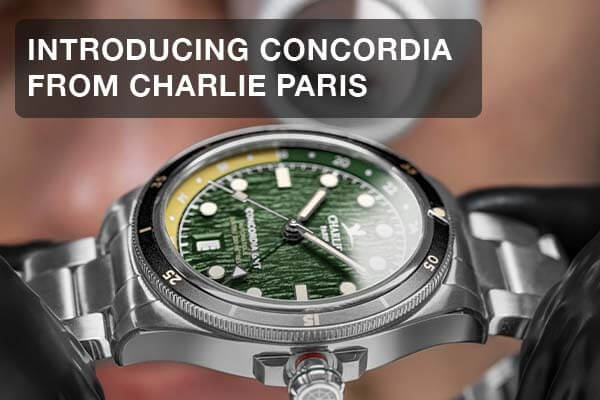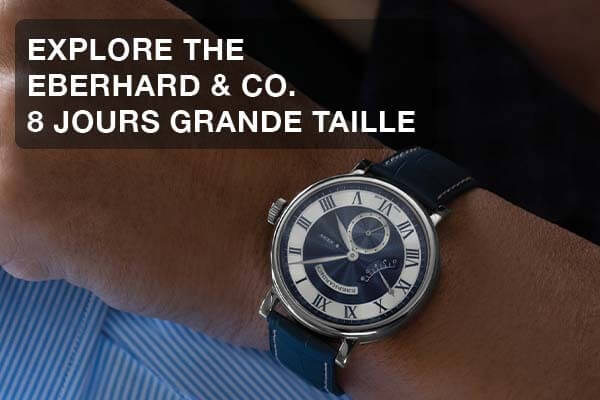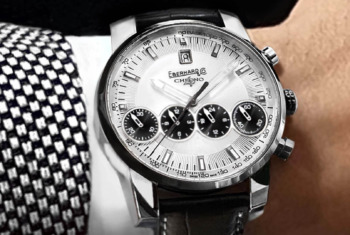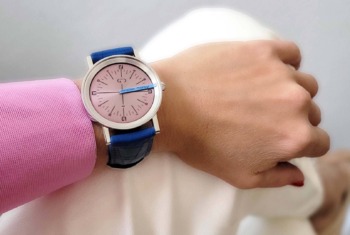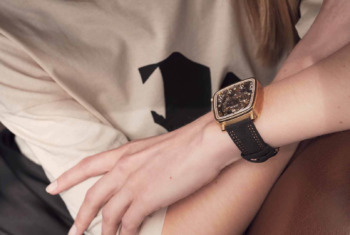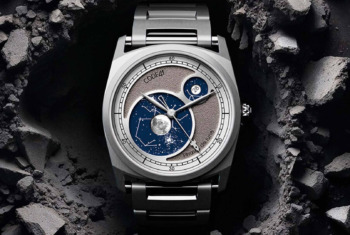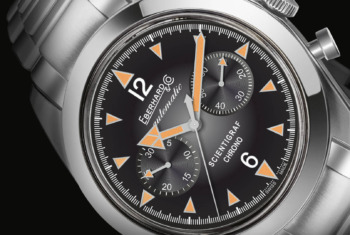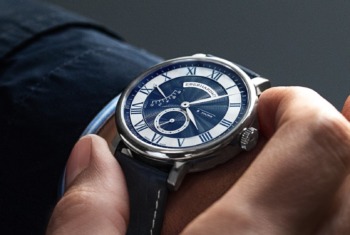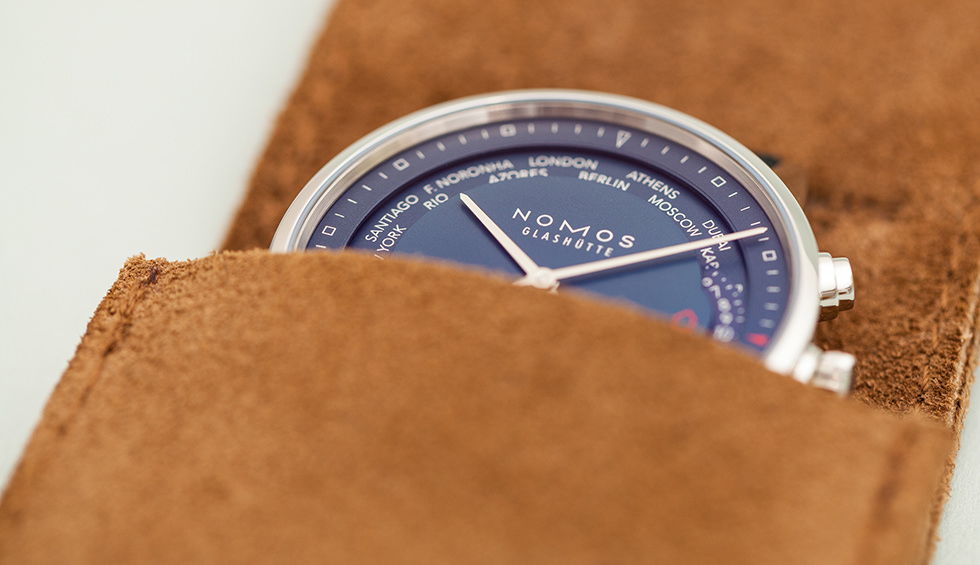
A BRIEF HOLIDAY GUIDE
If there’s one word in the English language that immediately brightens everyone’s day, then it has to be vacation. After months of working hard and a lot of office day-dreaming, your holiday dates are finally penned into the calendar and fast approaching. With your travel tickets booked, you’re mentally primed for a well-deserved time of beach lounging, city-hopping, or outdoor adventure. However, picking just the right vacation watch, a key component in your world-traveling kit, isn’t a decision that’s easily made. Particularly when you have the pleasure of owning more than just one timepiece.
A timekeeper’s case dimensions, how waterproof it is, its functionality, and even the kind of watch strap are all important points worthy of consideration before you head out the door. At Montredo, we’re all too familiar with the dilemma of finding the right vacation watch for those sunshine filled days and exciting adventures. With this in mind, we’ve composed a brief holiday guide with some recommendations that will ensure your timepiece is travel-ready.
1. Size and form
First on our list is a timepiece’s size and form. While everyone has different tastes, a piece that is oversized or too bulky will probably end up being more of a hindrance. Your vacation watch should be low maintenance as well as conform easily to and rest comfortably on your wrist. Ergonomic designs can be a choice that will pay off in the long-run, particularly if you’re doing a lot of sport and outdoor based activities (hiking, biking, sailing, swimming, etc.). Avoid top-heavy pieces, as they can weigh your strap down and let the watch hang too loosely.

2. Strap
While we’re on the subject, the kind of strap you select is an important point that should also be given some consideration. While leather aesthetics compliment e.g. a formal or elegant watch, it’s not the most practical choice for wet environments or hot climates. A leather strap is highly likely to degrade or change its form and feel from seawater as well as body sweat. However, there are other types of material to choose from for your everyday holiday wear such as stainless steel, textile, and rubber.
Rubber straps are ideal for tropical or arid environments as they are water-repellent. NATO textile straps don’t only just visually switch up a watch’s appearance, but they also sit securely on the wrist and are relatively easy to clean. Stainless steel bracelets are robust, sit steadfast if appropriately fitted, and are a good choice for various kinds of rugged types of environments. However, it should be noted that the chlorine in seawater can still damage stainless steel (over longer periods of time) and sand grains/gravel under the right set of circumstances can still scratch more robust alloys like stainless steel.
3. Complications
There is a lot of watch complication variety in haute horlogerie that showcases all kinds of functionality. A few can be really useful while on holiday. For example, a timekeeper which is equipped with a GMT complication is an ideal model companion to have when traveling between two different time zones, because it’s capable of displaying both times over the watch’s GMT hand and/or bezel.

There are also watches that incorporate an intuitive world timer complication, which enables a determination of the time in 24 time zones (represented by 24 cities) at the same time. It’s perhaps an interesting feature for anyone holidaying on a cruise ship or someone flying frequently from one cosmopolitan destination to the next. Furthermore, an alarm watch complication is a helpful wrist tool that can come in handy, ensuring that you won’t ever oversleep any must-see vacation outings or even your return flight home.
4. Optics
Here it might be best to just stay themed. A sporty looking timepiece is an excellent choice for any outdoor based activities and an elegant dress watch is an equally great pick for more refined affairs. It’s important to keep in mind that if your adventurous nature has you headed out into the remote corners of the world, it’s best to be aware of your surroundings. Too much luxury has the propensity to draw all kinds of unwanted attention.
5. Bezel
A watch bezel can provide a lot of additional functionality. Some examples are diving watches that have a unidirectional bezel, which can keep track of submersion time and signal when it’s time for the diver to resurface. There is also GMT functionality, which is usually operated in unison with a GMT bezel. For all the backpackers or outback types out there: timekeepers are available that feature a bezel compass. It uses the position of the hour hand and sun to determine its wearer’s direction. While it might not be super-accurate, it still might get you out of a jam if you need to find a north position during the daytime and help prevent you from unwillingly spending the night somewhere out in the wilderness.

6. Water Resistance
This is definitely a must-have feature for anyone going on holiday and coming into contact with water more often and for longer periods of time. The good news is that most mechanical and quartz timekeepers come fitted with some measure of water resistance so that at the very least, they can withstand an absent-minded splash or a short period of time under the shower. By the same token, it’s important to keep the watch manufacturer’s specifications concerning the timepiece maximum depth in mind.

Naturally, pursuits like scuba diving are going to require a higher resistance than an average “quick dip” in the hotel swimming pool. For further info on how to best interpret a watch’s actual water resistance and additional tips on how to care for your timekeeper coming into contact with water, have a look at our magazine articles on How to Interpret Water Resistance Properly and Tips for Handling Watches Close To Water.
7. Type of Crystal
Lastly, a watch’s type of crystal should also be considered. Sand, rocky soil, and other materials can really scratch up a watch’s face, not to mention creep their way into the mechanics and cause a lot of problems. Under the right conditions, hard impacts can also shatter the crystal. The three types; acrylic, mineral, or (synthetic) sapphire all have different attributes with pros and cons.
Acrylic is the same type of material as plexi or plastic glass. It’s not particularly scratch resistant, but scratches can be buffed out and acrylic crystals are resistant against shattering. Mineral crystals are normal glass that has undergone an additional heating process or hardened chemically and seven times tougher than acrylic crystal. However, if you are looking for the ideal vacation watch, you might want to choose a watch with the most scratch resistant material available: sapphire crystal.
Sapphire crystals are three times harder than mineral crystals and offer the best possible protection. An added benefit is that it provides a crystal-clear visibility whereas mineral crystals can fade and develop a milky patina. Many sapphire crystals are treated with a non-reflective film that can cut down on glare. If your holiday has you headed towards an area with a lot of sunshine, then this is definitely an added plus.

8. Price
Lastly, a watch’s price might also be something to consider. Whether or not you should really bring along the most expensive luxury timekeeper on your vacation is a question everyone has to answer themselves. A robust piece that packs performance and visual appeal yet doesn’t immediately announce its retail cost and isn’t a total loss in a worse-case scenario.


